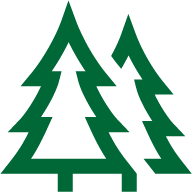
Tree Care Basics: A Starter Guide
4 Useful Tree Pruning Tips To Remember
Johnni Knight
Pruning trees is one of the most important yard management practices. This is primarily because it enhances your property's beauty and keeps your trees in excellent shape. Some homeowners may prefer to prune their trees themselves, particularly the smaller branches, but this task is best left to professionals. Making pruning mistakes can expose your trees to diseases and pests, affecting the overall appearance of your home.
This guide expounds on some tree-trimming tips to guide you in performing this task.
Use Proper Tools and Sanitize Them
As part of your planning for pruning your trees, ensure that you have the necessary tools and that they are in excellent condition. In particular, they should have sharp edges so you can make clean cuts. The issue with using blunt tools is that they leave wounds on the branches, opening them up to pests and diseases. To avoid this, it is also advisable to disinfect the pruning tools when moving from one tree to the next.
Recognize the Right Parts to Prune
Before you prune the tree, you should clearly distinguish between the branches that should and shouldn't be cut. One of the signs that you need tree trimming immediately is if you notice tree branches that are dying, diseased, or have an injury. Moreover, if the tree has weak branches or some that are almost touching the power line or roof, you should trim them.
Prune Your Trees at a Favorable Time
It may be best to prune the trees during winter. This is when they are in the dormant stage and are less susceptible to pests and fungal diseases. During this season, it's also easier for an arborist to clearly see your tree's structure because most trees shed leaves during fall. This helps your pruning expert inspect for dead or diseased branches more easily.
Don't Cut the Branches Close to the Collar
As you prune your trees, the cuts shouldn't be close to the collar of the tree trunk or branch. If they are, the wounds from the cut take longer to heal. Additionally, when making your cuts, ensure that you don't leave too much of a stub behind. Such stubs aren't attractive and can initiate weak shoots under the cuts or even introduce decay into the tissue when the stub rots.
Tree pruning shouldn't be as daunting if you pay attention to the tips in this guide. If you aren't completely confident about pruning the tree yourself, consider seeking the help of an experienced tree service professional.
Share

Proper tree care is an essential part of maintaining your property's appearance and overall well-being. After all, neglected trees can quickly become safety hazards if limbs should fall and damage your property. That's why it's important that you know how to take care of your trees. Luckily, this site is here to help. With the information on this site, you'll be able to better understand the different needs of each type of tree on your land. That way, you can tailor your tree care accordingly and you'll know when you should call a tree service for more help and ongoing care.
-
Why You Should Hire a Tree Company for Your Property 17 July 2024
-
The Benefits Of Removing Trees From Your Property 13 February 2024
-
The Importance of Professional Hazardous Tree Removal 19 January 2024